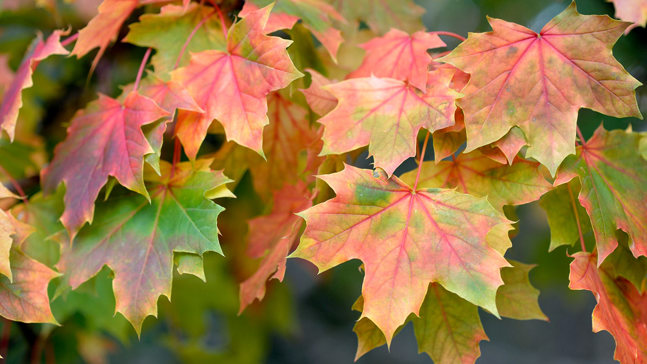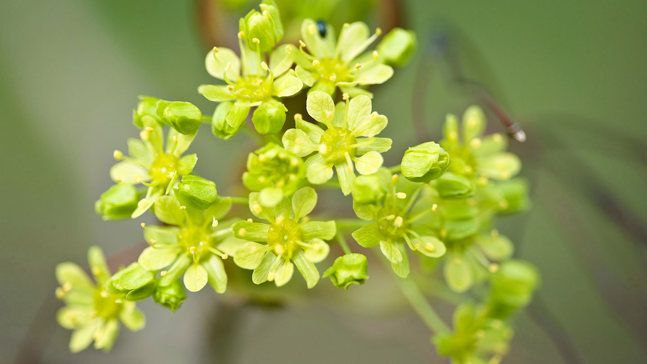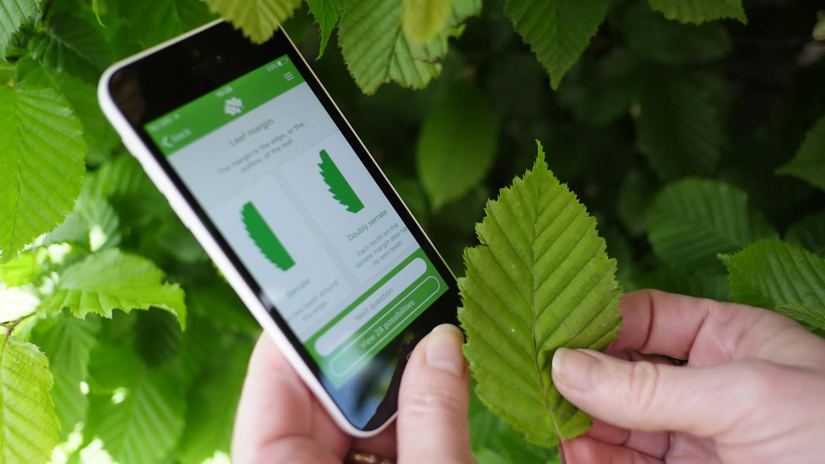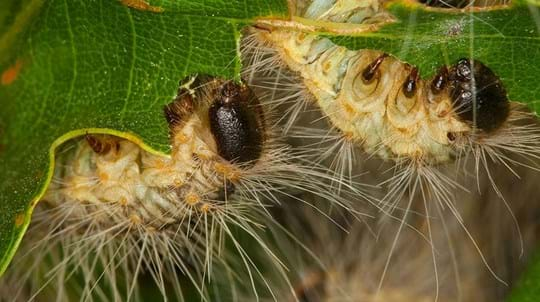
Credit: Our Wild Life Photography / Alamy Stock Photo
Leaves
Palmate with five lobes with a few pointed teeth. They are usually dark green in colour, fading to yellow and occasionally red before falling in autumn.
Introduced in the 17th century, the handsome Norway maple is known for its hardy timber. Its leaves are a favourite with caterpillars and its seeds are eaten by birds and small mammals.
Common name: Norway maple
Scientific name: Acer platanoides
Family: Sapindaceae
Origin: non-native
Norway maple is a deciduous broadleaf tree and can grow to 25m. The bark is grey with fine ridges, and the twigs are slender and brown with tiny white spots.
Look out for: leaf stalks which ooze a milky sap when squeezed.
Identified in winter by: individual buds that are green and red.

Credit: Our Wild Life Photography / Alamy Stock Photo
Palmate with five lobes with a few pointed teeth. They are usually dark green in colour, fading to yellow and occasionally red before falling in autumn.

Credit: M & J Bloomfield / Alamy Stock Photo
Bright green flowers grow in clusters of up to 30.

Credit: Tim Gainey / Alamy Stock Photo
Once pollinated by insects, female flowers develop into winged seeds, known as samaras, which fall in autumn and are spread by wind.
Sycamore (Acer pseudoplatanus). The angle of the seeds is wider in Norway maple.

Download our free Tree ID app for Android and iPhone to identify the UK's native and non-native trees. It's an A-Z tree guide in your pocket.
Download the appNorway maple is the most common tree in Toronto, Canada.
Norway maple was introduced to the UK from its native range of eastern and central Europe in the 17th century. It can be found in the UK as a street tree and is widely planted as an ornamental tree in parks and gardens due to its tall trunk and tolerance of compacted soils, shade and pollution.
A number of moth caterpillars feed on the leaves, and the flowers provide nectar and pollen for bees and other insects. Birds and small mammals eat the seeds.
Like other maples, Norway maple can be tapped for its syrup.
Norway maple timber is similar to that of sycamore, being hard, strong and pale cream in colour. It may be used for a variety of situations, including furniture and turnery. However it is not often grown commercially due to problems associated with grey squirrels, which strip the bark.
Trees are also planted widely in towns and cities, thanks to their ornamental value and tolerance of shade and pollution.
Norway maple is affected by a variety of fungal diseases, including verticillium wilt and honey fungus. It is vulnerable to bark stripping by grey squirrels, horse chestnut scale insect and horse chestnut leaf miner.

Shop
We have single trees and tree packs to meet your needs, from wildlife to woodfuel. Delivery is free.
External link

Trees woods and wildlife
Learn more about the pests and diseases threatening our trees. Find out how to spot them, the symptoms and outlook, and how you can help.